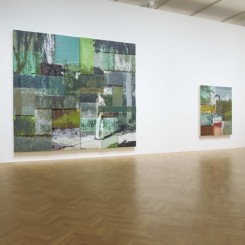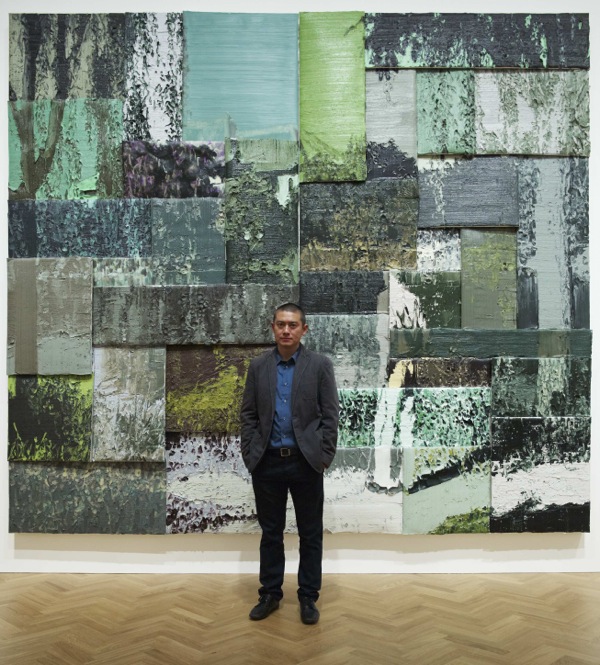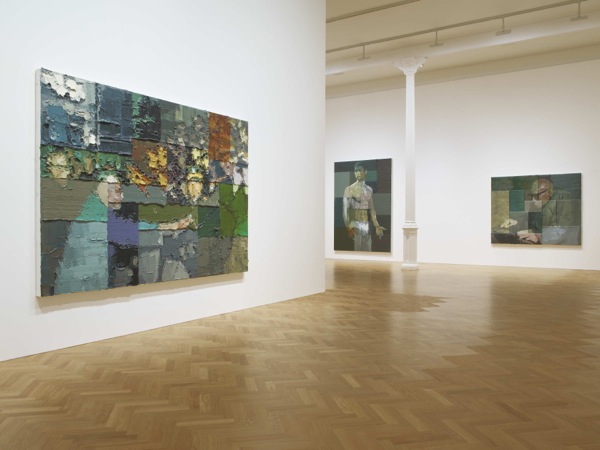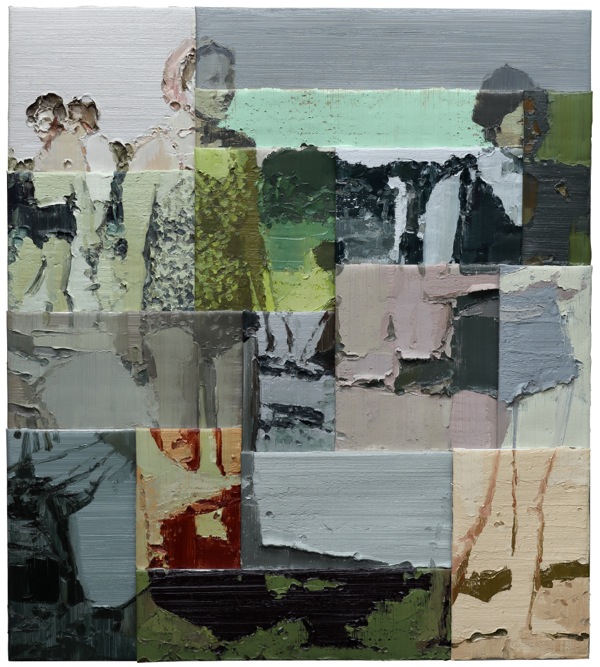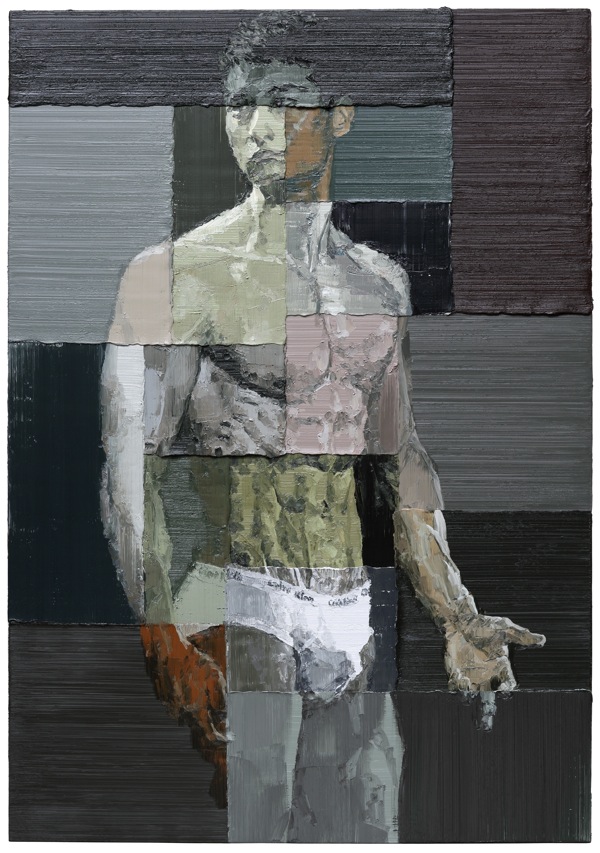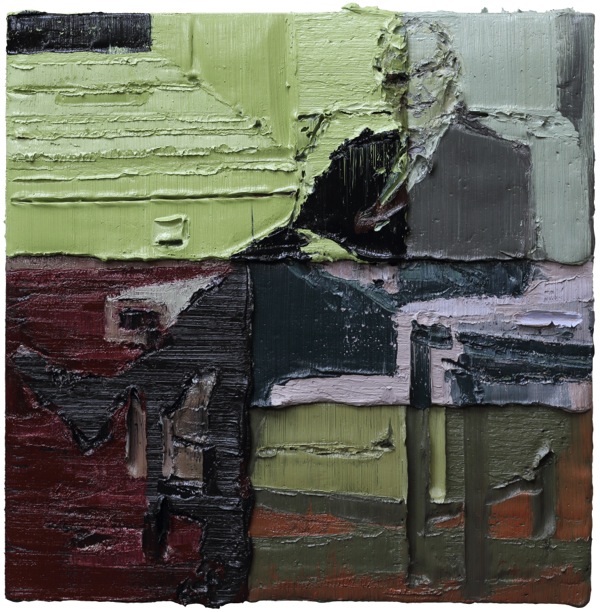“Li Songsong: We Have Betrayed the Revolution”
Pace Gallery, London (6 Burlington Gardens London, W1S 3ET, UK) Sep 19–Nov 9, 2013
In the wake of the near disastrous reception of the exhibition “The Revolution Continues: New Chinese Art” at the Saatchi Gallery in 2008-2009, contemporary art from the People’s Republic of China has had something of a bad press internationally. Indeed, one anonymous commentator has recently described contemporary art from China as nothing short of the worst case of sub-prime realty currently for sale on the international art market. Li Songsong’s exhibition at Pace, London suggests that such criticism is, in part at least, misplaced.
Li’s paintings command a significant physical presence. All of the paintings included in the artist’s exhibition at Pace involve pictorial representation on a notionally flat surface. Most, however, are exceptionally large and the quantities of oil paint applied to their surfaces are so substantial as to exceed the usual meaning of the term “impasto.” Many are also made up of numerous overlapping aluminum sheets fitted together conspicuously like so many plates along the side of an armored ship. When viewed anamorphically from the side, this combination of exceptional size, painterly excess and overtly modular construction overwrites the illusory aspects of Li’s work, projecting it firmly into the realms of the sculptural. Li’s signature method of constructing his paintings from an accumulation of individually considered and successively-completed panels also results in an unusual “all-over” uniformity. Consequently, when seen from in front, Li’s paintings appear by turns as coherent pictorial wholes and, through the inescapable push and pull of figures and grounds, as fragmentary collections of disparate parts.
Li’s works are most insistently―and as the artist himself would have us see them―manifestations of intense labor. Li is (what was once referred to in less “conceptual” times) a painter’s painter. His work is a lush index of the committed painter’s physical identification with the very stuff of their craft – the oozing tactility of paint and the heady working smells of freshly cut wood and thinners. Within the individual scope of its constituent panels, it is also powerfully indicative of his deft handling skills.
As its title no doubt aims to suggest, this is not an exhibition which focuses the viewer solely on formal accomplishment. Each of Li’s paintings involves an appropriation of a found photographic image culled from a magazine, an advertisement, the television or the Internet. These photographic images include depictions of Chinese actors and politicians, an elderly master of the traditional Chinese string instrument known as the qin, a city seen from the air and a beach scene, many of which would appear to have been taken in China during the latter half of the twentieth century. While the wider significances of the images appropriated by Li will be immediately recognizable to those familiar with Chinese history, society and culture, to others they will remain stubbornly opaque.
Formal comparisons with the work of Gerhard Richter and even Sigmar Polke are inescapable. However, unlike those of Richter and Polke and in spite of their self-evident “constructedness,” Li’s paintings do not assert themselves as knowing deconstructions of supposedly authoritative historical representations. Rather, there is a consistent aestheticization of the scenes depicted that engenders pleasurable feelings of ennui in a manner not dissimilar to the paintings of Walter Sickert. In conversation, Li seeks to reinforce such a reading by insisting that the images appropriated are chosen principally for their aesthetic appeal and, as such, simply as a desirable starting point for the process of painting. A reluctance to discuss the political implications of his work―including most notably paintings in the exhibition depicting Mao Zedong lying in state and the murdered British businessman Neil Heywood―is of course understandable, given continuing restrictions on freedom of speech within the PRC, where Li continues to live and work. Nevertheless, Li’s painting seems to shuttle constantly between a deeply felt yearning for and a penetrating indictment of the representation of past events. It is also arguably a performative enactment of the enduring ethical value of dedicated artistic labor.
Li’s paintings are the sum of numerous apparent contradictions: between materiality and flatness; the painterly and the sculptural; abstractness and narrative; the actual and the virtual; aestheticization and anti-auratic dislocation; vaulting ambition and bodily limitation. Seen from the perspective of the postmodernist turn, this accumulation of contradictions presents itself almost inevitably as a locus for unsettling invocations of difference and tension. The unequivocal imposition of such a reading is, however, to overlook the rather less discomfiting dimensions of Li’s work. While it would be a gross overstatement to link Li’s painting directly to the harmonizing tendencies of traditional Chinese aesthetics, there is nevertheless running throughout his work an undeniable reciprocity as well as tension between formal and conceptual opposites that suggests a simultaneous cleaving and resistance to both “Western” and “Chinese” cultural outlooks; a condition to which the often unduly synthetic use of the term hybridity as part of established Westernized critical discourse would appear to be somewhat inadequate. As Ezra Pound observes in his essay, “Mang Tze (The Ethics of Mencius)” ["Mang Tze" refers to "Mengzi"]: “Ambiguity and inclusiveness are far from the same.” One might add that neither are they wholly mutually exclusive.
Paul Gladston is Associate Professor of Culture, Film and Media and Director of the Centre of Contemporary East-Asian Cultural Studies at the University of Nottingham.
Lynne Howarth-Gladston is a writer and artist. She has exhibited at galleries in the UK and China.

